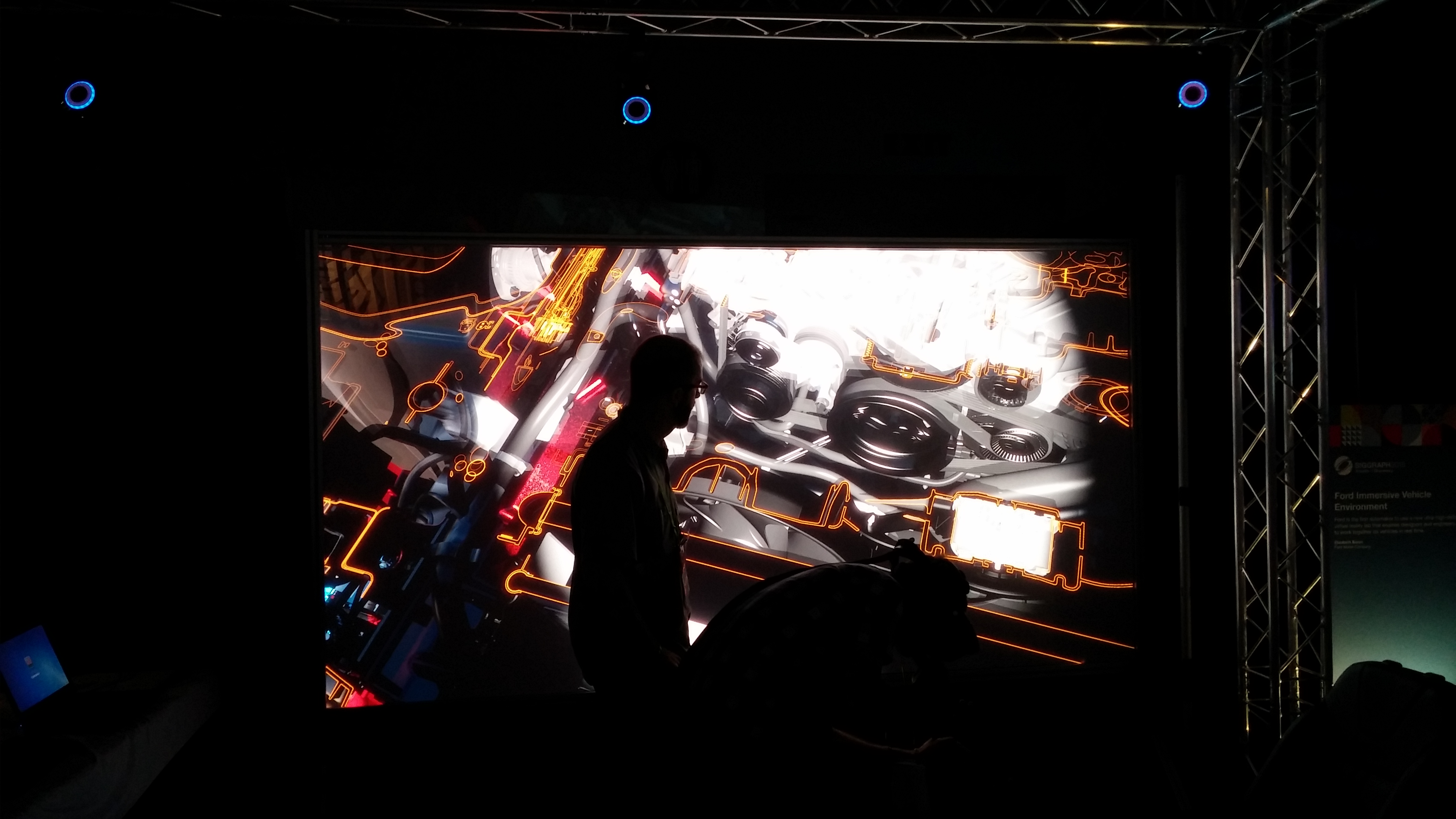

The definition of data visualization is: the graphical representation of information and data by using elements like images, video, charts, graphs, maps, and etc. Your business’s data and the design and engineering models you create are only as effective as your ability to see what's important so you can utilize the information. Gone are the days of trying to analyze data on paper, and now those old blueprints can be displayed in ultra-high resolution with the help of advanced visualization systems.
Today's Audiovisual systems are optimized for advanced visualization in order to display vast amounts of data and increasingly complex computer models with rich detail, clarity and color. Designers and engineers can make better decisions when they have the ability to work in a well-informed creative setting, with ultra high-resolution visualization systems that give them the ability to better understand and more accurately analyze the their models.
In environments where large scale visualization is needed (automotive and aerospace as examples) state-of-the-art, large-scale systems facilitate the display of detailed specs and engineering prototypes. Advancements in visualization technology has transformed workflows, allowing designers to view in acute detail, measure gaps and margins, and sketch out models in a visionary environment prior to physical development.
Advanced visualization integration partners create large-scale, high-quality systems like PowerWalls, head-mounted displays (HMD'S) and Cave Automatic Virtual Environments (VR rooms) right into your company’s buildings.
Innovative 4K and 3D technology systems create dazzling visuals of the most complex data. And, with the latest direct view LED (dvLED) hardware, size can be easily scaled to accommodate even the largest of models so you can see them in full (1:1) scale.
With the right partner in AV integration, advanced visualization systems can be designed to present a variety of media and content from single or multiple sources to display large amounts of data and imagery at once (called multi-windowing). As the workflows improve, some of the byproducts include improved image analysis accuracy, and faster and more collaborative decision making.
Additionally, advanced visualization systems have been shown to allow for both designers and engineers to participate and work together more effectively. Beginning with a design-orientated advanced visualization space in mind, focusing on factors like color and lighting to showcase a particular product or model, enhances creativity and collaboration. An environment developed and integrated primarily for engineering will focus more on usability, functionality, ambient light, and desks.
Advanced visualization can benefit a wide range of design ventures for industries such as:
Many companies’ Virtual Build Teams use advanced visualization systems to visualize and plan every aspect of the assembly process in 3D detail. Engineers, human factors specialists, and assembly planners utilize these sophisticated systems to simulate the entire assembly process months before parts begin arriving on the assembly line floor.
All branches of U.S. Military (like the U.S. Navy) use similar technology. Use cases include design and engineering tools similar to the automotive industry, simulation and training, and command and control. Today’s military takes advantage of advanced visualization systems including PowerWalls, CAVE’s and virtual reality.
Other corporate, research and government users harnessing the value of advanced visualization systems include Apple, BAE Systems, Cruise Automation, Kalitta Air, Stellantis, and The Boeing Company, .
IGI is an industry leader in the complete integration of ultra-high resolution Advanced Visualization systems including PowerWalls, CAVEs and Virtual Reality. Request a consultation to learn more about how your company can realize the operational value of advanced visualization for your audiovisual display needs.
Immersion Graphics, Inc. (IGI) provides audio visual design, engineering, consulting, product sales, control system programming, custom fabrication, installation, preventative maintenance, and extended support services out of its headquarters location in Detroit and west coast operation in Los Angeles. Additional offices are located in Indianapolis, and Grand Rapids.
Founded in 1998, IGI has installed numerous large-scale, ultra-high resolution systems throughout the U.S. in the automotive, higher education, medical, financial, and energy transmission markets, and for the United States military and other government agencies. Applications include industrial design, engineering and data visualization, mission-critical command & control room environments, presentation systems, video conferencing, digital signage, and a variety of commercial AV solutions for emerging markets where the simultaneous visualization of 3D models and complex data by a group is essential to effective decision making. To get an in depth look at what we do, see our website at www.werigi.com, we are IGI.
IGI is minority owned, veteran owned, and a small business and SBA 8(a) program graduate.